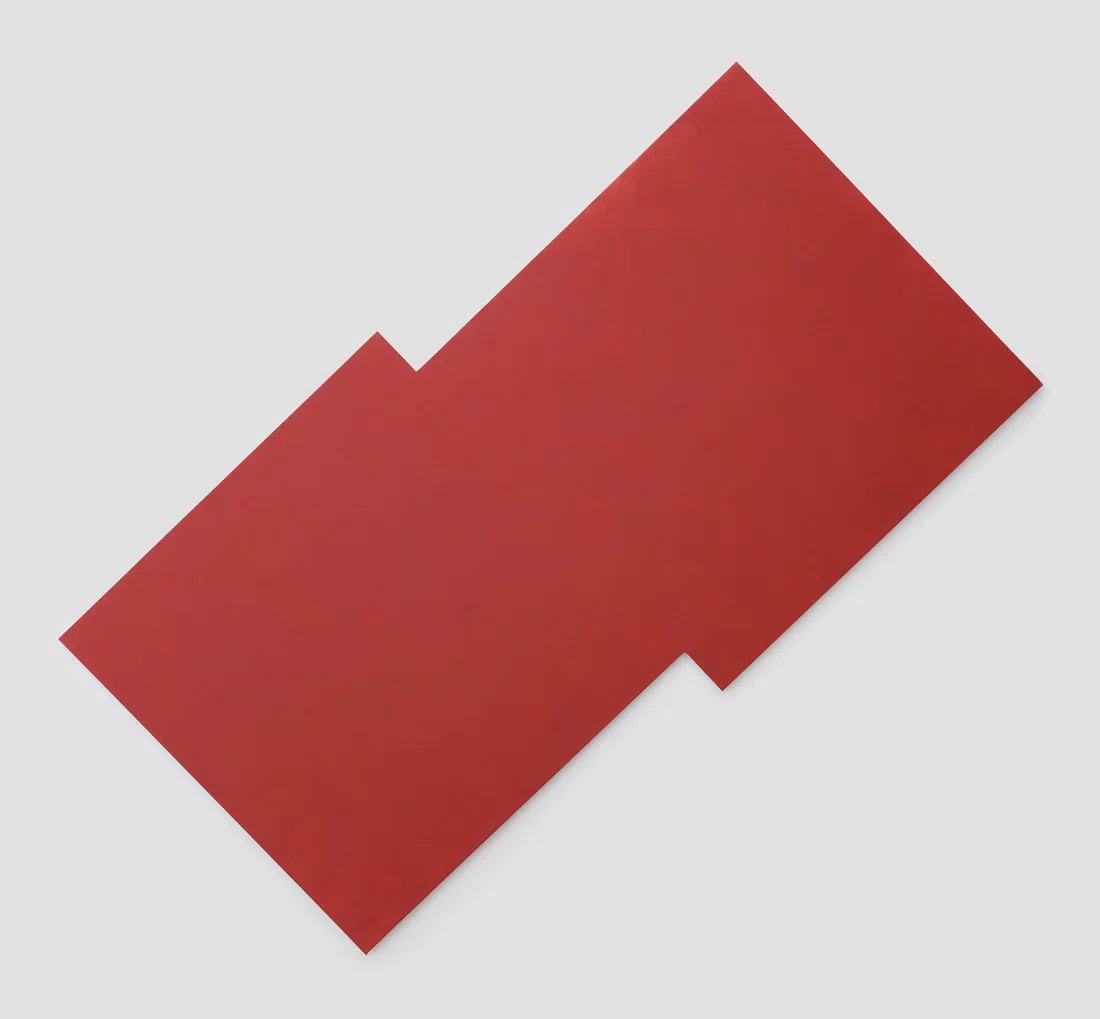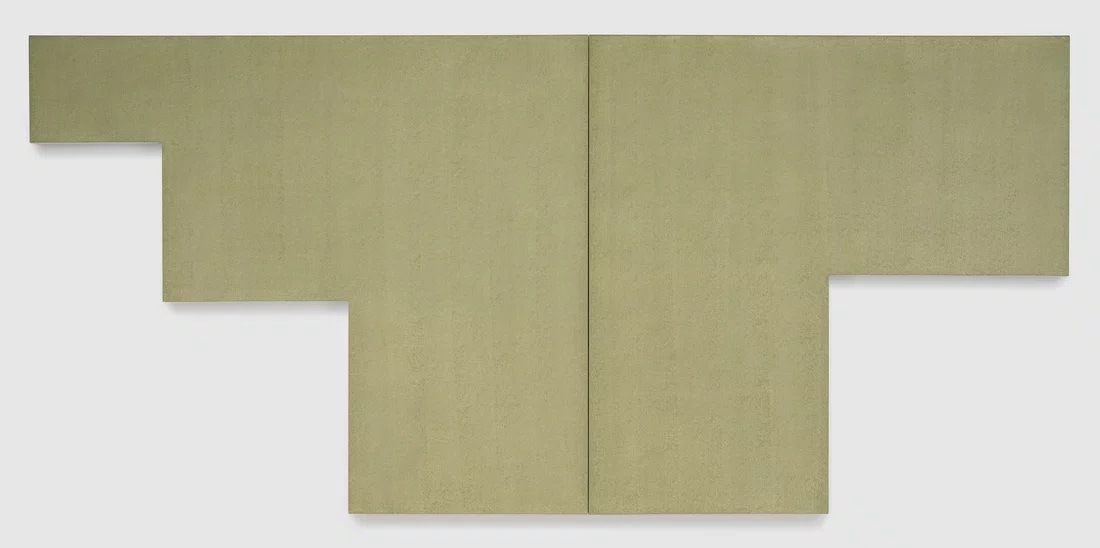PRESENTATION: Robert Mangold-Plane Structures
 Robert Mangold has, since the 1950s, explored line and color on supports ranging in shape, size, and dimension. Committed to abstraction as a means of communication, he has worked within a consistent geometric vocabulary to produce a varied body of paintings and works on paper. His career has developed through an evolution of techniques for the application of paint onto his chosen surface—first plywood and Masonite, and later, beginning in 1968, stre: tched canvas.
Robert Mangold has, since the 1950s, explored line and color on supports ranging in shape, size, and dimension. Committed to abstraction as a means of communication, he has worked within a consistent geometric vocabulary to produce a varied body of paintings and works on paper. His career has developed through an evolution of techniques for the application of paint onto his chosen surface—first plywood and Masonite, and later, beginning in 1968, stre: tched canvas.
By Dimitris Lempesis
Photo: Pace Gallery
In the exhibition “Plane Structures” Robert Mangold presents new paintings and a related presentation of works on paper. Mangold has been a key figure in painting since the 1960s. Exploring the fundamental elements of composition, the artist has created boundary-pushing geometric abstractions on shaped canvases that charted new frontiers within the medium. Mangold is part of a legacy forged with other major figures of Conceptualism and Minimalism, including his close friends Sol LeWitt and Robert Ryman and his wife Sylvia Plimack Mangold. In his latest exhibition at Pace, Mangold, showed “Plane Structure” paintings created between 2019 and 2022. These works feature broad planes of color across canvases of diverse shapes and sizes, reflecting a continuing engagement with color, line, and shape—and the effect these elements can have on each other—that has defined Mangold’s practice for over 60 years. As with preceding series, Mangold’s new paintings are a clear part of his continuous evolution. The paintings in the exhibition build directly upon Mangold’s most recent bodies of work while also reaching back to his earliest experimentations with color and form, symmetry and asymmetry, and notions of wholeness and fragmentation. Included in this show are “Plane Structure 7” (2021) and “Plane Structure 8” (2021), two diagonally oriented paintings that seem to be in motion, propelling themselves up the gallery wall by way of their shapeshifting structures. Notably, these works, along with “Curved Plane Structure 1” (2020), “Plane Structure 6” (2022), and “Plane Structure 9” (2022) lack drawn elements. Since 2018, the artist has experimented with works free of drawing, breaking from his longstanding practice of incorporating line into his canvases. These recent paintings directly relate to Mangold’s earliest mature works that also had no drawing, examples of which are in the collections of the National Gallery of Art and Tate—Red Wall. The undifferentiated surfaces of Mangold’s recent works give viewers only color and the physical form of the canvas but cleverly exploit their basic sense of perception to imply depth and dynamic movement. These illusory effects are more explicit in works with hand-drawn lines, such as “Plane Structure 4” (2020) and “Plane Structure 5” (2020), wherein the shapes of the canvas in combination with the lines can give the sense of the paintings extending into multiple dimensional planes. A group of works on paper, which is on view in the gallery’s library as part of a separate installation of related work, sheds light on a crucial aspect of Mangold’s process-based, contemplative practice. The artist often uses these works to parse his vision for a painting.
Robert Mangold was born in 1937 and spent his youth in Buffalo, New York. In 1956 he enrolled in the illustration department of the Cleveland Institute of Art. Within a year, he had transferred to the fine-arts division of the school in order to pursue an education in painting, sculpture, and drawing. While studying at the institute in 1957, Mangold traveled to see the Carnegie International in Pittsburgh, where he gained exposure to the work of a wide variety of Abstract Expressionist painters, including Willem de Kooning, Adolph Gottlieb, Franz Kline, and Jackson Pollock. That same year, he attended a major exhibition of Clyfford Still’s paintings at the Albright-Knox Art Gallery in Buffalo. Subsequently, Mangold’s painting reflected an interest in Abstract Expressionism as well as in the work of Alberto Burri and Antonio Tàpies. He began producing large-scale abstract paintings, moving away from an earlier interest in naturalism. After graduating in 1959, he was awarded a fellowship to attend the Yale Summer School of Music and Art, Norfolk, Connecticut, and in the fall of 1960 he entered the graduate program at the Yale University School of Art and Architecture, New Haven. There, he experimented with a variety of stylistic idioms. His classmates included Nancy Graves, Brice Marden, and Richard Serra. He married fellow art student Sylvia Plimack in 1961, and they moved to New York upon the completion of his MFA in 1962. He took a position as a guard at the Museum of Modern Art, moving after a few months to an assistant’s position in the museum’s library. At the museum, he met a number of artists also working as guards there, including Robert Ryman and Sol LeWitt. By 1964 Mangold had moved into his signature Minimalist painting style. His first solo exhibition, entitled “Walls and Areas”, was held at the Fischbach Gallery in 1965. The exhibition consisted of large paintings on Masonite and plywood; some works were painted thickly to approximate sections of wall, while others were sprayed to produce lighter effects. From 1964 through 1973, Mangold was affiliated with Thibaut and Fischbach galleries in New York and had numerous exhibitions in European galleries. In 1965–66, the Jewish Museum, New York, mounted the first major exhibition of Minimalist painting, which included Mangold’s work. Mangold became an instructor in the fine-arts department of the School of Visual Arts, New York, in the mid-1960s. His second solo exhibition held at Fischbach Gallery in 1967 featured his experiments with sections of circles on board and Masonite. In 1968 Mangold began employing acrylic instead of oil paint, rolling rather than spraying it on Masonite or plywood grounds. Within the year, he moved from these more industrially oriented supports to canvas. He received a fellowship from the John Simon Guggenheim Memorial Foundation in 1969, with which he and Plimack built a home in the Catskills. They lived there through the mid-1970s, at which time they moved to Washingtonville, New York, where they still reside. In 1970 Mangold began working with shaped canvases and within the year began brushing rather than spraying paint onto canvas. He became affiliated with John Weber Gallery in 1972, with Paula Cooper Gallery in 1984, and with Pace Gallery in 1991.
Photo: Robert Mangold, Plane Structure 7, 2021, acrylic on canvas, 86″ × 93″ (218.4 cm × 236.2 cm), © Robert Mangold / Artists Rights Society (ARS), New York, Courtesy the artist and Pace Gallery
Info: Pace Gallery, 540 West 25th Street, New York, NY, USA, Duration: 6/5-11/6/2022, Days & Hours: Tue-Sat 10:00-18:00,





